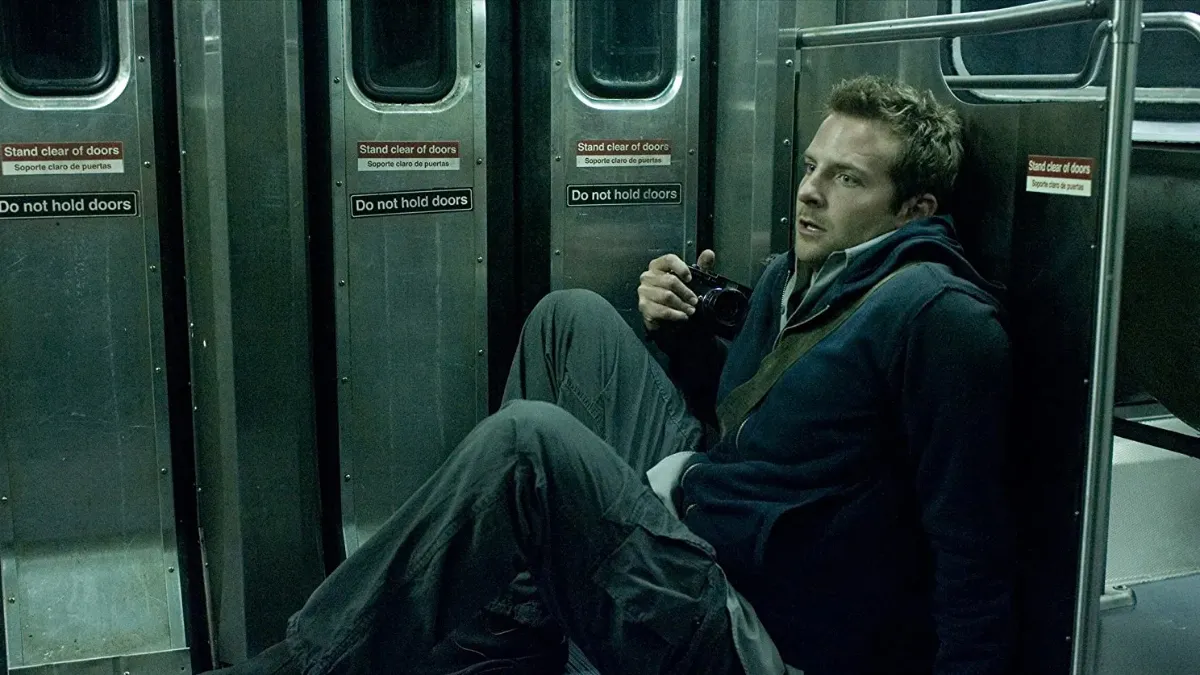The setting of the subway in horror cinema is an underused yet potent location that evokes an uncanny, foreboding atmosphere. Despite the familiarity of haunted houses or dark forests, the subway’s eerie, claustrophobic, and menacing ambiance remains relatively unexplored, often serving as a neglected backdrop in horror narratives.
One of the standout films that effectively delves into the potential horror within these labyrinthine underground tunnels is “The Midnight Meat Train” from 2008. Directed by Ryuhei Kitamura and based on Clive Barker’s short story, the movie revolves around Leon Kaufman, a photographer (played by Bradley Cooper) seeking artistic inspiration in New York City’s darker and more violent side. As Leon delves deeper into the city’s underbelly, he encounters a sinister man named Mahogany (portrayed by Vinnie Jones), who routinely boards the midnight subway and seemingly plays a role in the disappearances of passengers.
The film captivates viewers by predominantly setting its scenes within the dimly lit and sinister environment of the subway tunnels and train cabins. Mahogany’s gruesome acts of violence unfold on board, portraying him as a brutal slasher wielding a meat cleaver, leading to chilling and graphic sequences that venture into body horror. The narrative weaves a mystery around Mahogany’s sinister actions, hinting at a secret purpose behind the brutal killings and the subway’s hidden routes.
While “The Midnight Meat Train” boasts a unique and disturbing narrative, it has drawn criticism for its over-the-top CGI effects during the violent sequences, inconsistent sound design, and a polarizing and bonkers ending. The movie’s shifting tones, veering between character-driven drama and exaggerated gore, might not resonate with all audiences. The climax reveals a shocking truth about Mahogany’s connection to a hidden clan of ancient beings dwelling deep beneath the city, introducing a surreal and unexpected supernatural element.
However, despite these flaws, the film effectively captures the subway’s macabre and threatening essence, utilizing its inherent characteristics—harsh lighting, cramped spaces, the ominous unknown, and the feeling of entrapment—to build an atmosphere of terror.
“The Midnight Meat Train” stands as a unique entry in subway-based horror films, but it also highlights the genre’s potential in utilizing this setting for spine-chilling narratives. While a few other films, like “Raw Meat” (1973), “Creep” (2004), and select scenes in other horror movies, have explored the subway’s horrifying potential, it remains an underutilized backdrop in the horror genre.
In conclusion, the subway setting in horror offers a visceral and unnerving canvas that could be further explored by filmmakers. “The Midnight Meat Train” might have its divisive elements, but its effective use of the subway’s ominous environment leaves a compelling case for more horror stories to venture into these dimly lit and foreboding underground passages.

